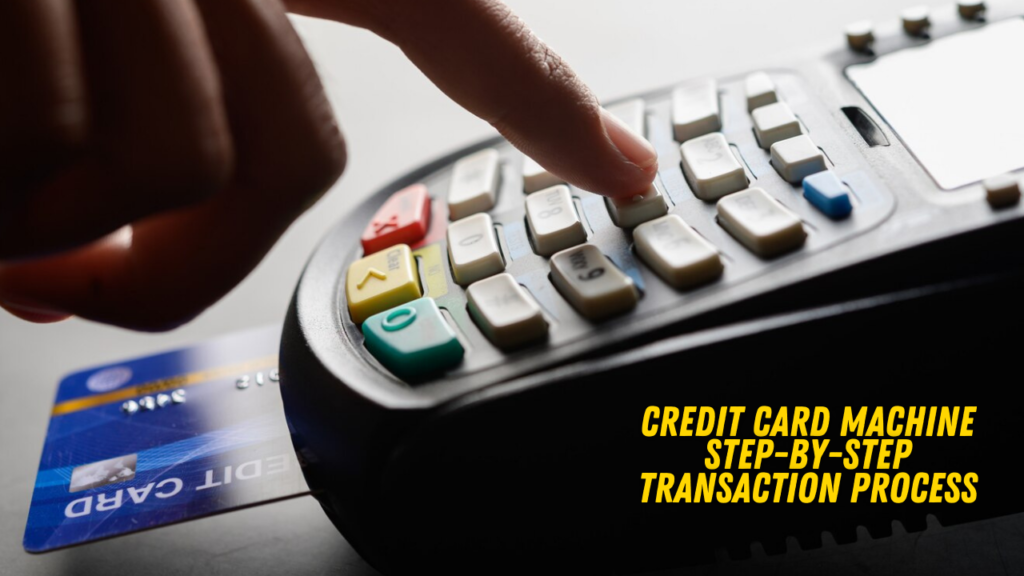
Credit card machines facilitate seamless transactions daily with a simple tap, insert, or swipe. These devices may look like magic, but have you ever wondered about the interior workings behind them? We invite you to start on a journey to judge the procedure and functionality behind credit card machines. How to use a Credit Card Machine?
1. What is a Credit Card Machine?
A credit card machine, a point-of-sale (POS) terminal, card anthology, payment terminal, or credit card terminal, is a device businesses use to facilitate electronic payments made with credit and debit cards. These machines are designed to read the data stored on a card’s glamorous stripe or EMV chip and securely process deals.
You’ll hear the term EMV a lot in payments. EMV stands for “Europay, MasterCard, and Visa,” the three companies that created the standard. It’s principally a security standard that all payment companies use.
Credit card machines play a significant part in ultramodern commerce by allowing guests to make purchases. They’re used in colorful settings, including retail stores, cafes, and other sale situations. Credit card machines offer features for authorization, payment processing, and sale operation, facilitating the secure and effective transfer of finances between guests and businesses.
Suggested for you: How to connect Smart Watch with Android Phone
2. Main Functions of a Credit Card Machine:

Credit card machines help as the backbone of remittance processing for firms of all sizes. These devices enable the smooth prosecution of sales transactions, capture essential sale data, and empower businesses to manage the complications of refunds, voids, and daily agreements. Here are some of the crucial functions that credit card machines enable.
- Sales Transaction: The primary function of a credit card machine is to facilitate the trade of goods or services. It processes the sale when a client makes a payment using their credit or debit card. The machine communicates with the cardholder’s bank (the publishing bank) to certify and finalize the purchase.
- Authorization and Capture: The credit card machine can authorize a sale but not reuse it. It would reuse the sale at an after date with the “capture” functionality. Authorization principally sends an authorization request to the issuing bank to corroborate the card’s validity and check if the cardholder has sufficient finances or credit available. This is generally used when you check in at hotels. They authorize commodities like $250 to corroborate your credit card.
- Payment Confirmation: Once the issuing bank approves the sale, the credit card machine generates payment evidence, indicating that the trade has been authorized. The client generally receives damage for their records.
- Refunds: Credit card machines can reuse refunds. However, if a client returns a product or requests a refund for a service, the machine can initiate a refund sale, crediting the quantum back to the cardholder’s account. This helps businesses manage returns and maintain client satisfaction.
- Reporting: Credit card machines offer reporting capabilities to give businesses a perceptive view of their deals. These reports can include deal summaries, sale history, and other data to help with account and record-keeping.
- Offline Mode: When the internet connection is temporarily unapproachable, credit card machines might have an offline mode. This mode allows them to continue recycling deals and store them locally until connectivity is restored.
- Transaction History: Credit card machines maintain a sale history, which is essential for record-keeping and disagreement resolution. This history includes details of all certified transactions containing sales, refunds, and voids.
Suggested for you: Best Gaming Mouse
3. Step-by-Step Transaction Process:

Credit card machine processing involves three vital stages: authorization, capture, and agreement. Each of these stages plays a pivotal part in the payment journey:
- Authorization:
- Card Entry: The client inserts, swipes, or tapes their credit or debit card into the credit card machine’s card reader.
- Data Transmission: The credit card machine reads the data from the card’s metal stripe or EMV chip.
- Authorization Request: The machine sends an allowance request to the issuing bank (the bank that printed the client’s credit or debit card). This request includes sale details like the quantity and card information.
- Bank Verification: The issuing bank verifies the transaction by checking the cardholder’s account for available credit or finances and performing security checks to prevent fraud.
- Authorization Reply: The publishing bank sends the credit card machine an authorization reply. If approved, this response includes an authorization law.
- Capture:
- Transaction Data Storage: While authorization verifies the transaction, the actual financial transfer or capture happens later. The credit card machine stores the authorized sale data after processing.
- Settlement:
- Batching: At the end of the day or another destined time, the credit card machine batches together all the authorized transactions.
- Funds Transfer: The batch of authorized transactions is transferred to the credit card company or payment processor for agreement. The finances are transferred from the client’s bank to the receiver’s account.
- Payment Confirmation:
- Receipt: The credit card machine generates payment evidence and issues a receipt for the client’s records. The receipt generally includes transfer details and the authorization law.
- Refunds and Void Transactions:
- Refunds: If a client returns a product or requests a refund, the credit card machine can initiate a refund sale. The refunded quantum is credited back to the cardholder’s account.
- Void Transactions: In cases where a transfer needs to be canceled before it’s settled, the credit card machine can void the sale, assuring the client isn’t charged.
4. Conclusion:
Every credit card machine needs a receiver account set up to work. Behind the sale scenes, multitudinous players, such as the cardholder’s bank, Visa, and payment processor, are involved, as described in the map below. The receiver account is a fiscal conciliator, allowing businesses to accept multiple payment styles like credit cards or mobile payments.